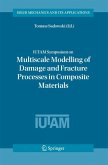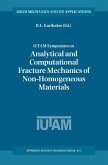Scaling methods apply wherever there is similarity across many scales or a need to bridge different scales, e.g. the nanoscale and macroscale. The emphasis at the Symposium was on fundamental issues such as mathematical foundations of scaling methods based on transformations and connections between multi-scale approaches and transformations. The Symposium remained focussed on fundamental research issues of practical significance. The topics considered included damage accumulation, growth of fatigue cracks, development of patterns of flaws in the earth's core and in ice, abrasiveness of rough surfaces, and so on. The Symposium showed that scaling methods cannot be reduced solely to dimensional analysis and fractal approaches. Modern scaling approaches consist of a great diversity of techniques.
These proceedings contain lectures on state-of-the-art developments in self-similar solutions, fractal models, models involving interplay between different scales, size effects in fracture of solids and bundles of fibres, scaling in problems of fracture mechanics, nanomechanics, contact mechanics and testing of materials by indentation, scaling issues in mechanics of agglomeration of adhesive particles, and in biomimetic of adhesive contact.
Dieser Download kann aus rechtlichen Gründen nur mit Rechnungsadresse in A, B, BG, CY, CZ, D, DK, EW, E, FIN, F, GR, HR, H, IRL, I, LT, L, LR, M, NL, PL, P, R, S, SLO, SK ausgeliefert werden.









